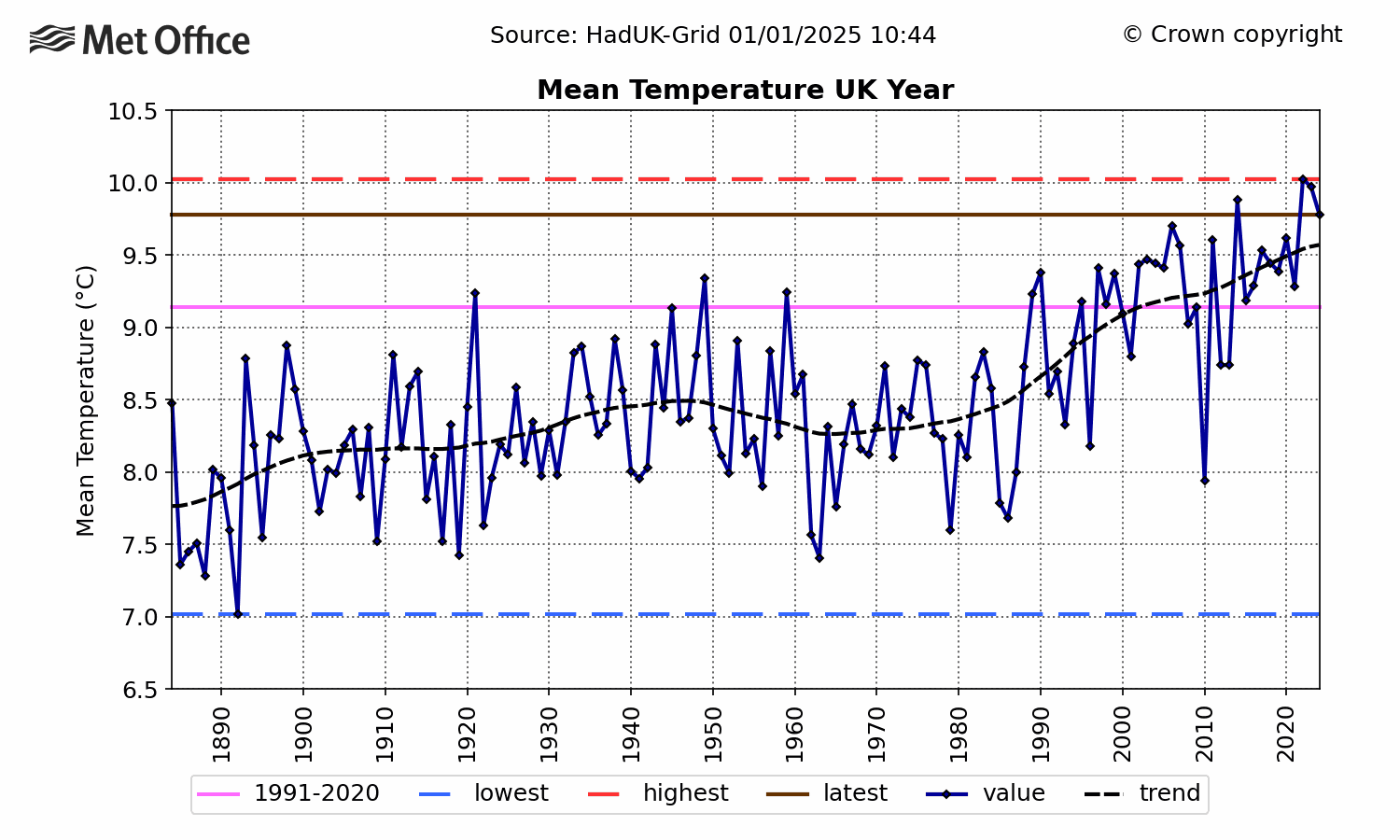by G. Sherrigton, Jan 29, 2025 in WUWT
The daily temperature observations from many Australian weather stations have now been routinely updated by the Bureau of Meteorology, BOM, to the end of year 2024.
Year 2024 has been publicized GLOBALLY as the “hottest year evah!” so it is time to examine how Australia fared. Here, heatwaves are the medium used.
The frequent, accepted chant is that globally, heatwaves are becoming “hotter, longer and more frequent”. This chant is not supported by the following heatwave analysis which examines 10 Australian weather stations with lengthy historic observations. This study has generated 160 graphs that are linked by weather station/city that is the main part of this article for readers to examine.
Here is a snapshot of Adelaide, using only 3-day heatwave examples, 4 graphs out of a possible 16 for Adelaide.
…
…
Some essential points:
- A day of missing data can lead to large damage to the calculations, because that 1 day affects 9 other days in the 10-DAY analysis. Therefore, all missing values were infilled, either by a subjective guess in the ballpark of surrounding values, or with the overall average Tmax value for the station. The shortest duration station, Brisbane, has some 50,400 days analyzed, with a few hundred missing values, so the odds of induced error are small. They can be traced.
- I have made the Excel commands as simple as possible. No knowledge of macros, programming or even Pivot tables is needed. The invitation is open for you to replicate the methodology for your own locations.
- I have not cherry picked the weather stations. Together, these 10 cities/locations house more than 70% of Australian population. This has meaning when planning for heatwaves, such as where to build hospitals and how large to make them.
- The chosen cities probably suffer from the temperature distortion of Urban Heat Island effect. There have been transect studies showing UHI in excess of a couple of degrees at times in both Sydney and Melbourne. I have now included two stations unlikely to have been affected by UHI, Cape Leeuwin and Longreach.
- Rebuttal of the misunderstanding that heatwaves are becoming “hotter, longer and more frequent” lacks credibility if actual data are used such s here, for 10 stations in far off Australia. It is hard to maintain that misunderstanding when simple graphs of real data are shown to those who make such claims. I am writing a more detailed analysis of these 160 graphs, should WUWT accept it.
- You are encouraged to make similar graphs for regions elsewhere. For heatwaves, they are hard to refute, in contrast with official/IPCC type studies, which usually commence after 1950 and which rely upon arcane definitions of heatwave to arrive at conclusions.







